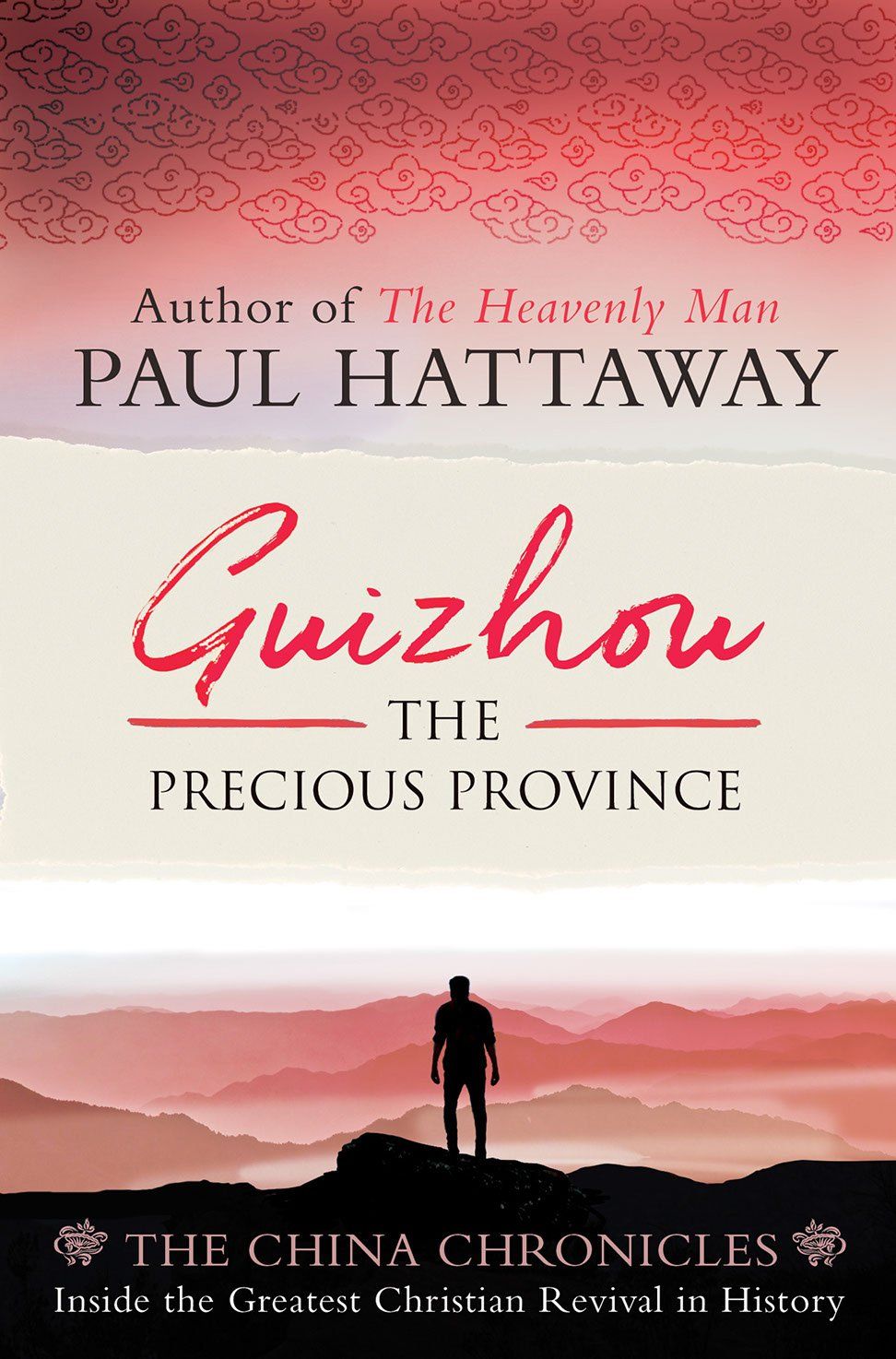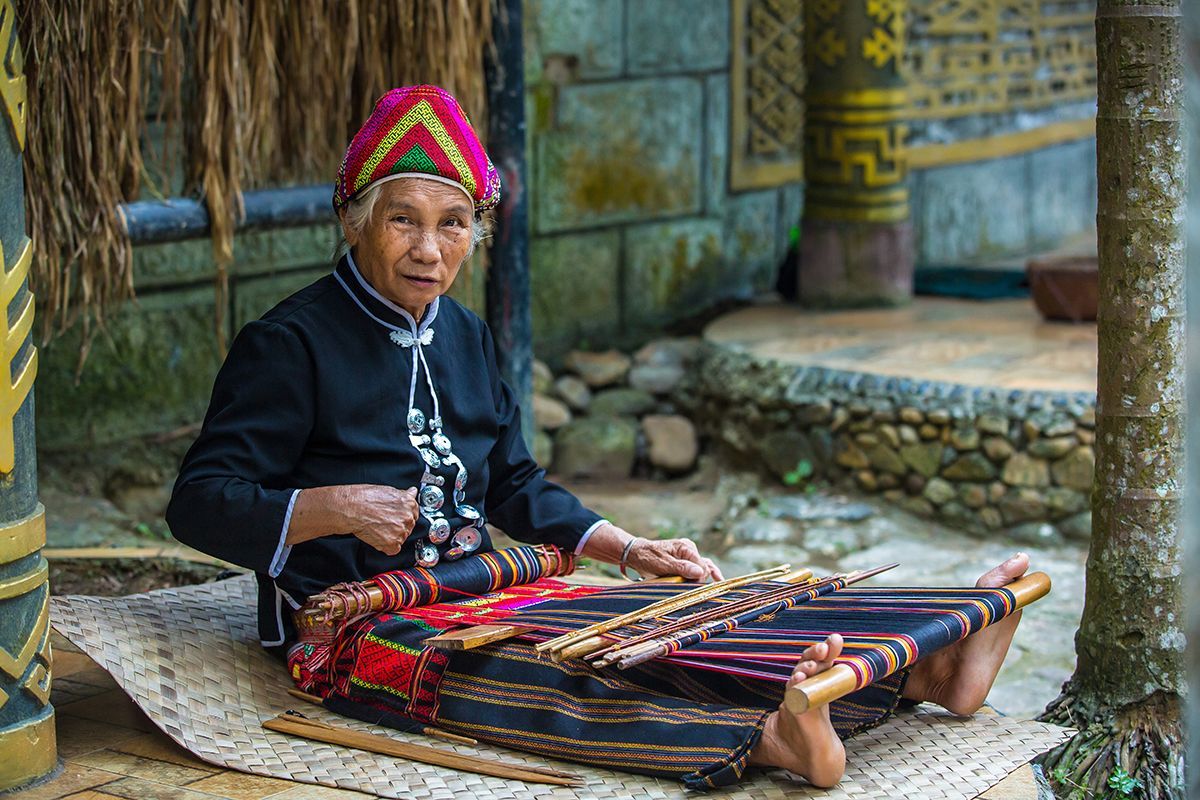1940s
The Church in Decay
During the 1940s, the Church in Guizhou experienced what one mission journal described as "a very serious process of retrogression and decay, which if not soon arrested will, in many a tribal district which in the past has been the focus of prayers and the scene of victories in the Lord's Name, bring us back to our starting point again."
In response to the need, a Bible school was established in the town of Gebu, south of Anshun. The school continued to function until the onset of Communism in 1949. With an average of 30 to 40 students each year, the school helped address the spiritual decay of many of the minority churches at the time. Rowland Butler, a missionary associated with the school, wrote:
"During the years that followed the advance of the Communist forces (1934-1936), the tribal Christians were left to their own leadership for long periods. Being an emotional people, and possessing only the New Testament and a small hymn-book in their own language, few of them being able to read, and fewer able to understand what they read, erroneous teaching crept in, which threatened the undoing of the whole Church. The local missionaries decided the only remedy lay in a Bible school for all the evangelists and teachers."
The Anshun region had long been a strategic hub for numerous people groups in Guizhou. From the time that James Adam first based there in the late 1890s, Anshun had been a vibrant center for Christianity in the province, and thousands of baptisms had been conducted in the city.
When Leslie Lyall—a CIM worker and author—moved to Anshun from northern China in 1941, however, he was dismayed to find the spiritual light of the Church in the city had dimmed to little more than a flicker. By 1943, Lyall described the once flourishing church in Anshun as "almost non-existent." He wrote:
"We have been in Anshun for just over two years. The conditions in this province are in contrast to the flourishing churches in north China. Among the poor and despised tribes the response to the gospel has been very large, but among the Chinese it has been very small indeed.... Though the church in Anshun is almost non-existent...we long to see men coming under the mighty conviction and quickening of the Holy Spirit. Nothing less will serve in a heathen land to turn men away from their superstitions, their materialism and above all, their sins."
Thankfully, the backsliding of the Anshun Christians did not continue, and just a few years later it was noted, "Only a handful of Christians remained; the church was dead. Last year, however, the big chapel was filled for the Sunday services, and the church supported its own pastor."
The Friedenshort Deaconess Mission
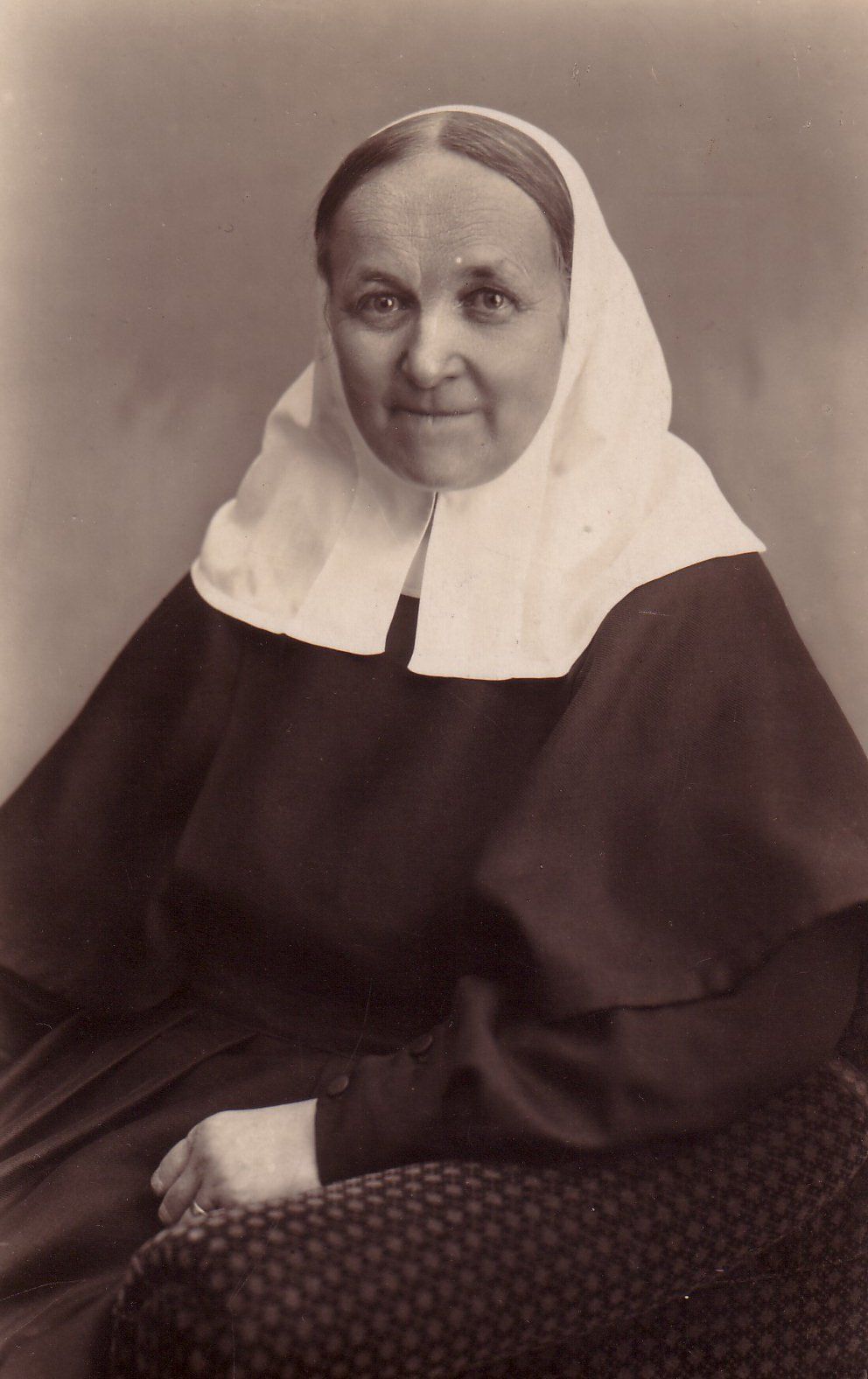
Eva von Tiele-Winckler.
One of the more interesting and effective Evangelical mission organizations to work in Guizhou was the Friedenshort Deaconess Mission, which was founded in the Upper Silesia region of the German Empire. Although the sisters in the mission sometimes dressed like Catholic nuns, they were an overtly Evangelical group that courageously served in Guizhou for decades, until their mission was finally shut down by the Communists in the 1940s.
The mission was established after its founder, Eva von Tiele-Winckler, met Hudson Taylor when he visited Switzerland. Eva later attended the Keswick Convention in England, where she received a call from God to help serve the poor in China.
The first sister was sent to Hong Kong in 1905, but when four women volunteered to work among the tribes of Guizhou, the CIM accepted the Friedenshort Mission as an associate member. From the start, the women were effective servants of the gospel, pioneering medical and children's work among the impoverished tribes.
During the First World War all funding from Germany was cut off, but the sisters persevered at their isolated base near Dafang in northwest Guizhou. Their headquarters were situated 6,000 feet (1,830 meters) above sea-level in a village that was often cut off by snow during winter. Their location was so remote that even the leaders of the mission usually only traveled out of the region once a year to attend the CIM conference, and to collect mail and supplies.

Ruth and Hannah Chen.
The Friedenshort Mission was greatly appreciated by the local tribespeople, and the work received a boost when two Chinese sisters, Ruth and Hannah Chen, joined the mission. A 1933 report by the leader of the mission at the time, Sister M. C. Welzel, provided an insight into why they were so effective in reaching various ethnic groups for Christ despite years of overwhelming difficulty:
"Besides the work among different Miao tribes in the district, such as the A-Hmao, Gha-Mu, Hmong Shua, Hmong Daw and Wooden Comb Miao, a movement began among the Nosu, so that for several years we were hardly able to respond to all the calls and also teach the converts....
In the midst of this happy work, we experienced years of famine, accompanied by epidemics of various fevers, the result being a high death-rate. We also lost two sisters from typhus. Whole villages died out because of this dreaded disease, and also for want of food, and many people moved to lower areas, most of whom never returned.... Cruel persecutions of believers have been frequent.
Still the work went on, though much hindered, and hundreds of converts were gathered in. In 1925...work began in the city of Bijie, a long day's journey to the northwest of Dafang.... We are glad to say that the number of workers has gradually increased. Two Miao pastors and a number of Nosu and Miao helpers and elders, school teachers and Biblewomen, as well as a few Chinese helpers, are sharing the burden of the work and taking more responsibility....
The work among the Chinese has been more difficult, and they usually keep aloof from the tribes and Nosu, whom they despise. Still, a number have also been won to the Lord's side. Not a few have been won through dispensary work, for this is also an appalling need, as the nearest doctors and hospitals are many days' journey away. Then there is the need of the many lepers throughout the district. Work among them has just started."
Saving the Lepers
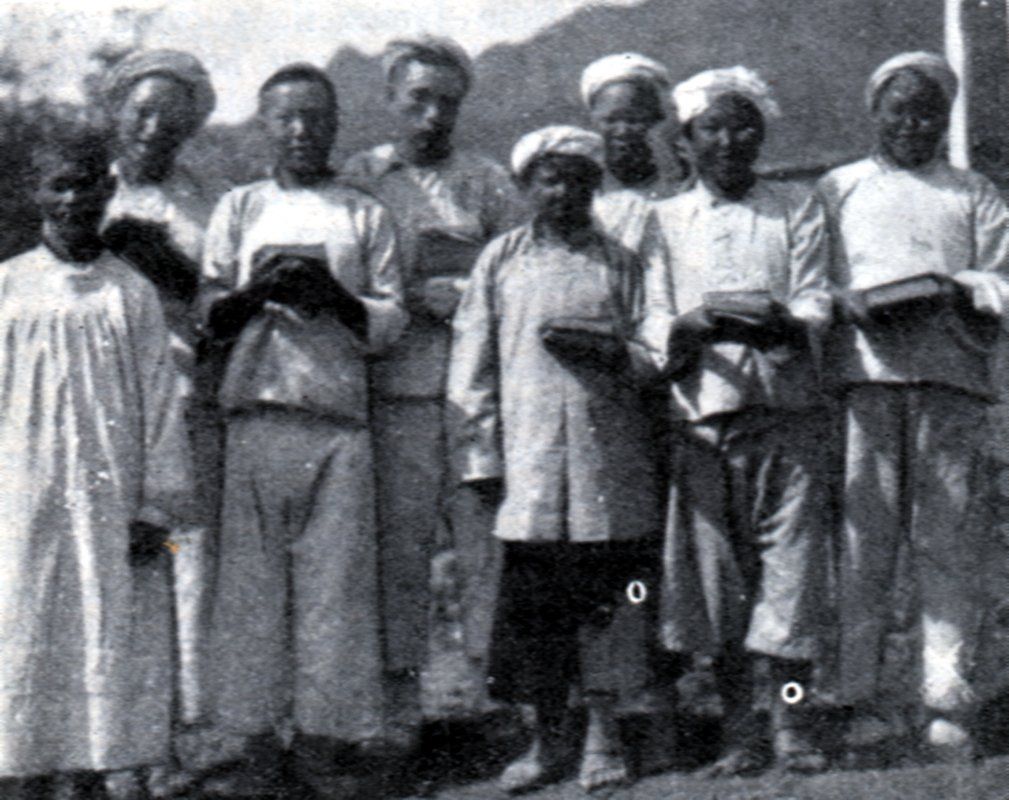
A group of lepers who surrendered their lives to Jesus Christ.
With China in turmoil because of civil war, the Friedenshort sisters continued to reach out to the many lepers who lived in the mountains. Sister Welzel reported:
"The Lord opened a door for the almost untouched Nosu, who live in large numbers in western Guizhou.... Some of our best evangelists and Christians are from among these people. Ordinarily the Chinese, Nosu and Miao have little intercourse, the former despising the latter; but in Christ the wall of partition is broken down. Our workers are from all three classes and work together in love and harmony. Among our lepers are Chinese, Nosu, Miao and Hmu."
After decades of grim struggle in the barren mountains, the Friedenshort Mission faced their most severe trial when the Communist army swept through their area. The leader of the work in Bijie at the time was an A-Hmao pastor named Paul Chang, who later summarized his experiences:
"I sometimes thought that I had never suffered for my Lord, but in February 1936 the Reds came to Bijie. Many left the city, but I felt it was my duty to stay and help the Christians in time of need. When the Reds heard that I was the pastor of the church they captured me and I had to pass through many trials at the hands of these evil men. But I had wonderful experiences too, for the Lord was near me.
They beat me badly and burned my face, but while doing so the ravens came making a great noise. The Reds superstitiously took this as a bad omen and set me free. The Lord used the ravens to save me, praise His wonderful Name! ...
Those experiences helped me to come nearer to the Lord, to love my Bible more, and to pray more, and to be eager to do the Lord's work. Formerly I read through the Bible once a year, now I read it through at least three times a year."
As conditions deteriorated, Ruth Chen managed to send out a letter, explaining how "she and two of the lady teachers and two evangelists were on the hills for 19 nights and days, often having to walk all night in the dark and spending whole days without food. While hiding they could see the Reds and hear them offering farmers $500 for every foreigner that was taken. The mission compound was robbed, and doors and furniture burnt."
The tumultuous experiences of the Friedenshort Sisters at the hands of the Chinese Communists were mirrored back in Europe, where their home region became part of Communist East Germany, before being incorporated into Poland. During the chaos that engulfed Europe, the archives of the mission were destroyed. As a result, little is known about what happened during its final years, or what became of believers like Paul Chang and the Chen sisters.
In northwest Guizhou, however, the effects of these courageous and faith-filled women have endured. Today many Nosu, A-Hmao and other Christians inhabit the desolate mountain communities near Dafang and Bijie. The work of the little-known Friedenshort Deaconess Mission greatly contributed to the rich Christian heritage in this part of Guizhou.
The Shining A-Hmao Church

Miao playing traditional 'lusheng' pipes in Guizhou. [Miao Messenger]
For decades the A-Hmao churches had steadily grown in grace, while experiencing many setbacks along the way. Missionaries William and Muriel Rae, who served among the A-Hmao in the late 1930s and early 1940s, told how the Christians received a God-given strategy to share the gospel with unbelievers. This new approach provided a great boost to the work.
For centuries the wide-spread A-Hmao communities had gathered once or twice a year at large festivals, where the people offered sacrifices to placate the evil spirits. Tens of thousands of A-Hmao people attended the festivals, which afforded an opportunity for people to catch up with relatives and friends, while youngsters looked for potential suitors.
After attending one of the major A-Hmao festivals, Muriel Rae wrote, "Musicians played bamboo pipes ranging in length from three to 12 feet, which played in unison produced frightfully discordant sounds thought to dispel the spirits." The bamboo pipes Rae referred to are called lusheng, and are used by many Miao tribes, and by other minority groups in south China.
For decades the A-Hmao Christians had not attended these festivals, for they no longer feared demons nor had a need to appease them. Their absence created tension between believers and their unsaved relatives. The A-Hmao Christians realized they needed to start attending the festivals again, and they viewed them as opportunities to spread the fame of Jesus Christ. William Rae remarked:
"These popular events are tremendous opportunities for the A-Hmao to mingle with their kinsfolk—to tell them of their own marvelous deliverance from fear.... As music resounded in the hills, the Christians moved about in the crowd, their gentle, mild manner and glowing faces attracting attention from those who wondered about the radical change in their demeanor. The Christians were quick to explain how they, too, had once been fearful and in bondage, but had been introduced to One who could set them free. The Christians promised to visit villages to teach them this 'better way'."
The decision by the A-Hmao Christians to attend the festivals made a huge impact, as believers reconnected with the rest of their tribe and the gospel was shared. The churches began to grow again, and thousands of new A-Hmao believers entered the kingdom of God. When a missionary visited the remote A-Hmao base at Kopu in 1945 he reported:
"Hundreds of baptisms are still taking place, and the church membership is about 4,000, while maybe half of that tribe may be reckoned as under Christian influences.... Never shall I forget the thrill of preaching at their annual convention. There were 1,300 crowded into the huge chapel for the noon service on the Sunday, and most of these stayed for the Communion service which followed. These hill-folk are grand singers; hymn-singing in four parts was a real inspiration."

Three A-Hmao Christian women.
A Changing of the Guard
In May 1949 it was apparent that all of China would soon fall under Communist control. The British Consul General ordered their citizens to leave China, and as most of the missionaries among the A-Hmao were British, they evacuated their posts. One of the departing missionaries wrote:
"I was absolutely amazed at how quickly the Church recovered from the bewilderment which came with the Consul's order. The A-Hmao leaders at Stone Gateway immediately started planning for the future. We were running very short of copies of the hymnbook in the Pollard script, and being afraid that when the Communists arrived the printing of all Christian literature would be banned, the A-Hmao set up and duplicated several hundred copies."
The printing was completely paid for by the local believers, and a special service was held where "the two themes were praise and thankfulness for the past, and a full realization that the Church was now theirs and their responsibility."
As the final missionary left the area, a respected A-Hmao church leader named Zhu Huanzhang told P. K. Parsons, "Teacher, when you get to England, please thank all the friends for their continued powerful support. We do not know what will happen when the Communists come. It may be that we will not be permitted to run our schools and our churches, but do not be afraid. The truth of God is deep in our hearts and can never be taken from us."
The A-Hmao had possessed the New Testament in their language since 1917. In the 1940s plans were made to translate the Old Testament, but the arrival of Communism postponed the work. Another 60 years were to pass until 2009, when the more-than 200,000 A-Hmao Christians in China finally had the entire Bible available in their language.
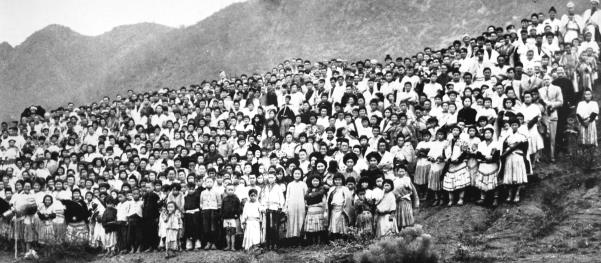
A-Hmao Christians on a hillside at Kopu in 1948.
For the Church in Guizhou, the 1940s concluded in much the same as previous decades—the A-Hmao and a few other tribes in western Guizhou had thriving churches, while the rest of the province remained largely unevangelized.
One study of the Church in Guizhou just prior to Communist rule in 1949 found there were 100,000 Evangelical Christians in the province. This number represented almost a five-fold increase in the three decades since a 1922 study listed just 20,873 Evangelicals in Guizhou.
The Catholics, on the other hand, had struggled to advance. By 1950 their numbers had scarcely increased in three decades, with a total of 41,813 church members reported throughout the province.
© This article is an extract from Paul Hattaway's book 'Guizhou: The Precious Province'. You can order this or any of The China Chronicles books and e-books from our online bookstore.

